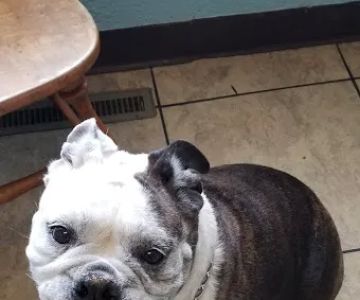- 1 - Dog not interested in toys anymore: common concerns
- 2 - Possible health reasons for losing interest in toys
- 3 - Behavioral and emotional changes
- 4 - Environmental factors and boredom
- 5 - Real-life cases of dogs losing interest in toys
- 6 - Ways to encourage play and reignite interest
- 7 - When to seek professional guidance
- 8 - Hidden Brook Veterinary support for your dog
1 - Dog not interested in toys anymore: common concerns
Many owners worry when their dog is not interested in toys anymore. Toys are not just for entertainment; they are essential for mental stimulation, physical exercise, and even emotional bonding. When a dog suddenly loses interest, it’s often a signal that something deeper needs attention. Understanding the root cause can help restore their joy for play.

12410 Seal Beach Blvd Ste A, Seal Beach, CA 90740, USA
See Details2 - Possible health reasons for losing interest in toys
One major reason behind this change could be health-related. Dogs experiencing dental pain, arthritis, or general fatigue may avoid toys because playing becomes uncomfortable. For example, a Golden Retriever with early arthritis might stop chasing balls not out of boredom but due to joint stiffness. Scheduling a veterinary exam is the first step in ruling out medical concerns.
3 - Behavioral and emotional changes
Dogs, like humans, go through emotional ups and downs. Anxiety, depression, or stress can all contribute to a loss of interest in toys. A dog that recently moved homes or lost a companion animal might withdraw from play. This behavioral shift often requires patience, consistency, and reassurance from the owner to help them rediscover comfort in playtime.
4 - Environmental factors and boredom
Sometimes the issue is as simple as boredom. If your dog has been playing with the same toys for months, the novelty wears off. Imagine being given the same puzzle every day—it eventually becomes dull. Rotating toys, introducing new textures, or incorporating puzzle feeders can make playtime exciting again and stimulate curiosity.
5 - Real-life cases of dogs losing interest in toys
In one viral story from social media, a rescue dog stopped playing with toys altogether until his foster family discovered he preferred soft plush toys over rubber ones. Another case involved a senior Beagle who lost interest due to vision decline, only to rediscover joy with toys that made squeaking sounds. These examples remind us that each dog’s needs and preferences can shift over time.
6 - Ways to encourage play and reignite interest
Encouraging play often means getting creative. Owners can participate more actively by turning toy time into interactive sessions, such as tug-of-war or hide-and-seek games. Incorporating treats inside toys can also increase motivation. The key is making playtime engaging and rewarding, not repetitive or forced.
7 - When to seek professional guidance
If your dog continues to ignore toys despite changes in routine and environment, it might be time to consult a professional. A veterinarian can check for underlying health problems, while a canine behaviorist can help address emotional or psychological factors. Early intervention prevents further withdrawal and helps your pet return to a balanced lifestyle.
8 - Hidden Brook Veterinary support for your dog
At Hidden Brook Veterinary, we understand how concerning it is when your dog loses interest in play. Our team offers both medical evaluations and behavioral advice to uncover the reason behind the change. Whether it’s selecting the right toys, addressing pain, or guiding you with stress management strategies, we’re here to ensure your dog rediscovers joy in play.










